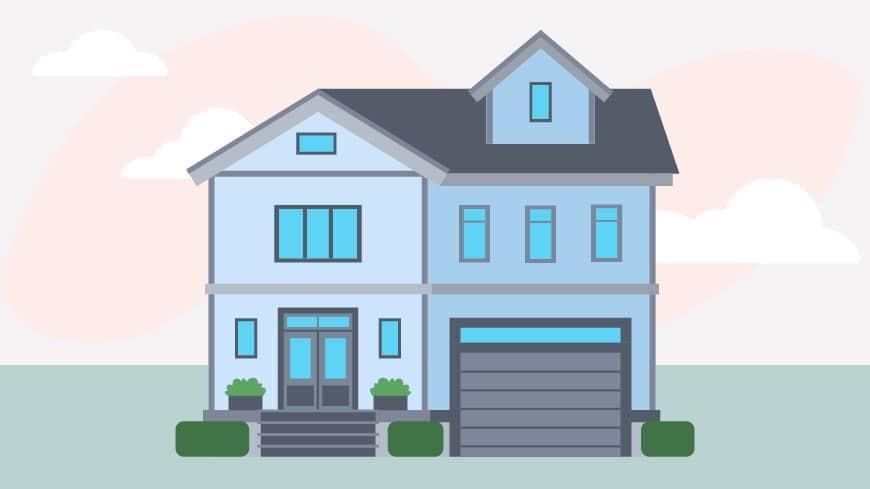What Is Mortgage Insurance Premium (MIP)?

You're probably wondering, "What is a mortgage insurance premium, and why am I paying for it?"
It’s normal to feel uneasy—no one likes surprise costs, especially when buying a home. You’re already dealing with interest rates, down payments, closing costs and now this?
But understanding the MIP meaning is key to making sense of your home loan. It might feel frustrating now, but by the end of this, you’ll know exactly how it works—and how to manage it.
Ready to turn that confusion into clarity? Start your pre-approval with Rate.
How Do Mortgage Insurance Premiums Work?
Mortgage insurance premiums are payments made by borrowers who take out mortgage loans insured by the Federal Housing Administration (FHA), a division of the Department of Housing and Urban Development (HUD).
FHA loans are designed for borrowers who may not qualify for a conventional mortgage, offering them an opportunity to secure a home loan.
MIP protects the mortgage lender in case the borrower defaults. But here’s the catch: you, as the homeowner, pay for this mortgage loan insurance cost.
Think of MIP as a safety net for the lender, not for you. In return, you gain access to financing even if your financial situation isn’t ideal. It’s a trade-off that makes homeownership possible when conventional mortgages might not be an option.
Do You Have to Pay Mortgage Insurance Premium Upfront?
Yes, MIP requires an upfront payment, known as the Upfront Mortgage Insurance Premium (UFMIP), in addition to the monthly mortgage payments. This upfront fee is typically 1.75% of the loan amount, due at closing. For example, if you’re taking out a home loan of $200,000, you’ll pay $3,500 upfront.
If you don’t have the cash at closing, don’t worry—FHA allows borrowers to roll the upfront MIP into their loan. However, this will increase the overall size of your mortgage loan and the interest you’ll pay.
Is MIP Different on Different Mortgage Types?
Yes, MIP varies depending on the type of loan. FHA loans and conventional loans require different types of mortgage insurance, which are MIP and private mortgage insurance (PMI) respectively.
FHA MIP Based on Loan Term Length
The length of your mortgage term affects the MIP amount. FHA loans are available in various term lengths, but we’ll focus on two main categories: terms longer than 15 years and terms of 15 years or less.
Terms Greater Than 15 Years
For FHA loans longer than 15 years, the annual mortgage insurance premium (MIP) ranges from 0.80% to 1.05% of the loan balance, depending on your loan amount and loan-to-value (LTV) ratio. The higher your loan amount or the lower your down payment amount, the more MIP you’ll pay.
Terms Less Than or Equal to 15 Years
For shorter-term loans, the MIP rates drop to between 0.45% and 0.95%. Choosing a shorter loan term means you’ll not only pay off the loan faster but also reduce your monthly mortgage insurance premiums. If you can handle higher monthly payments, a 15-year loan could save you a lot on insurance costs over time.
How Long Will You Pay the MIP?
You’ll pay MIP for either 11 years or the life of the loan, depending on the home’s purchase price and your down payment amount. If your down payment is 10% or more, you’ll pay MIP for 11 years. If it’s less than 10%, you’ll pay for the life of the loan.
Either way the MIP doesn’t just drop off - you’ll have to refinance out of your FHA loan and into a conventional loan. Otherwise you will pay MIP for the life of your FHA loan regardless of your equity
The financial impact of this can be significant, especially as your home value appreciates over time. For example, if you take out a $200,000 FHA loan with a 30-year mortgage term and put down 3.5%, you’ll pay MIP for the life of the loan.
At an annual MIP rate of 0.85%, that’s $1,700 per year, adding up to $51,000 over 30 years. Compare that to a borrower who puts down 10% or more and only pays $18,700 in total MIP premiums. That’s a $32,300 difference.
MIP vs PMI: What Are the Differences?
Both MIP and PMI serve the same purpose—protecting the lender’s investment in real estate—but here are key differences between PMI vs MIP:
Loan Types
MIP is exclusive to FHA loans, while PMI applies to conventional loans.
Provider and Regulatory Differences
MIP is government-backed through the FHA, while PMI is provided by private lenders.
Cost Calculation
PMI costs are influenced by your credit score and LTV, offering lower rates to borrowers with higher credit scores. MIP, however, is tied to the loan amount and term, making it more predictable but less flexible.
FHA MIP vs PMI: Which Is Better for You?
The answer to this question depends on these factors:
Credit Score
If your credit score isn’t great, FHA loans with MIP might be more accessible since FHA loans have more flexible credit requirements.
Debt-To-Income Ratio (DTI)
FHA loans allow higher DTIs, which is helpful if your debt load is high. However, you might end up paying MIP longer.
Loan-To-Value Ratio (LTV)
FHA loans allow higher LTV ratios, meaning you can qualify with a smaller down payment, but you’ll pay MIP for a longer time.
Tax Implications of MIP
Mortgage loan insurance premiums have tax implications that can either work for or against you, depending on your situation. Here’s what you need to know.
Is MIP Tax Deductible?
Yes, MIP is tax deductible. To claim this deduction, you need to itemize your deductions rather than taking the standard deduction. Make sure you’re aware of the latest tax rules by checking the IRS website or consulting a professional, as tax laws can change frequently.
How to Claim the MIP Deduction
Itemize Deductions
You must choose to itemize your deductions rather than taking the standard deduction.
Form 1098
Your lender will provide this form, which lists how much MIP you paid during the year.
Income Limitations
If your adjusted gross income (AGI) exceeds $100,000 (or $50,000 if married filing separately), the deduction begins to phase out and disappears at $109,000 (or $54,500).
How Can I Avoid Mortgage Insurance Premiums?
If the thought of paying MIP makes you second guess homeownership, there are ways to avoid MIP entirely or reduce how long you pay it.
Consider Other Government-Backed Loan Options
Not all government-backed loans require MIP. If you qualify, there are other options out there that may help you avoid this extra cost.
USDA Loans
If you’re buying in a rural area, a U.S. Department of Agriculture (USDA) loan might be a better option. USDA loans don’t require a down payment, and while they do have their own version of homeowner’s insurance, the premiums are often lower than FHA’s MIP.
VA Loans
Department of Veterans Affairs (VA) loans are available to veterans, service members, and sometimes their spouses. They are one of the best alternatives to FHA loans because they require no down payment and don’t come with mortgage insurance premiums, offering substantial savings.
FHA loans
We’ve talked a lot about FHA loans, but it’s worth reminding you that they’re designed for borrowers who may not have a large down payment or perfect credit. First-time homebuyers often fit this description.
Increase Your Down Payment
The easiest way to avoid MIP is by putting down at least 10% on your FHA loan. As we’ve discussed, doing so means you’ll only pay MIP for 11 years instead of the life of the loan. If you’re able to save up for a 20% down payment, you could avoid MIP altogether by qualifying for a conventional loan instead, especially if mortgage rates are favorable.
Transition to a Conventional Loan
If you’re already in an FHA loan and have built up some home equity, refinancing into a conventional loan can help you escape MIP. Once your loan-to-value ratio reaches 80%, you can refinance and drop MIP, saving you money on your monthly payments.
Keep in mind that you’ll need to meet the credit and income requirements for a conventional loan and factor in any funding fees associated with the new loan.
How to Lower Your FHA Mortgage Insurance Premium?
While FHA doesn’t allow direct reduction of MIP, there are strategies to minimize the cost or impact of the premium.
Choose a Smaller Loan Amount
If possible, opt for a less expensive home to reduce the upfront and annual MIP amounts, saving you money in both the short and long term.
Increase Your Monthly Payment
By slightly increasing your monthly mortgage payment, you can pay down the loan balance faster. This helps reduce the overall interest paid on the loan, leading to potential savings in the long run, even if you can’t directly lower the MIP rate.
Explore Down Payment Assistance Programs
Look into state or local down payment assistance programs, which can help you increase your down payment and potentially qualify for a lower loan-to-value (LTV) ratio. A lower LTV could reduce how long you have to pay MIP, or help you avoid paying it for the life of the loan.
How Can I Start the Mortgage Process?
Now that you understand what mortgage loan insurance premium is and how it affects your loan, the next step is to get clear on your specific costs so you’ll know exactly what your mortgage will look like before committing.
By doing this, you can plan with confidence, avoid surprises, and make informed financial decisions.
You can gain more clarity through pre-approval. Start your pre-approval today with Rate!
Rate, Inc. is a private corporation organized under the laws of the State of Delaware. It has no affiliation with the US Department of Housing and Urban Development, the US Department of Veterans Affairs, the US Department of Agriculture, or any other government agency.
Rate, Inc. does not provide tax advice. The consumer should always consult a tax advisor for information regarding the deductibility of interest and other charges in their particular situation.




